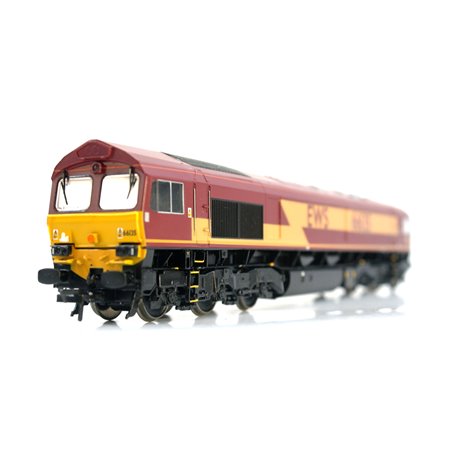No products
Product successfully added to your shopping cart
There are 0 items in your cart. There is 1 item in your cart.
Bachmann Branchline 32-725 Class 66 66135 in EWS Livery. Used. OO Gauge
UP-T7853
In stock
| Power | Analogue (DCC Ready) |
| Scale | OO (1/76) |
More info
Bachmann Branchline 32-725 Class 66 66135 in EWS Livery. DCC Ready (8 Pin), Directional lighting
This engine is in excellent condition with no signs of wear and tear. We carried out a light service and fully tested it and it runs fantastically.
It comes in its original box with the detail set and paperwork
The Class 66 is a six-axle diesel-electric freight locomotive, somewhat based on the earlier Class 59 locomotives. The class has proved to be highly successful with a total production run of 480 in the UK (with additional locos imported from overseas following this) and alternative versions of the loco being marketed to Europe as the EMD Class 66. Upon privatisation, a number of newly-privatised rail freight companies; Transrail, Mainline, Loadhaul, Railfreight Distribution, and RES were bought out and became EWS. EWS inherited a fleet of 1,600 mostly diesel locomotives, including many Class 47s which had to be overhauled every 7 years at a cost of £400,000. In an effort to reduce their operating costs, EWS approached Electro-Motive Diesel to build new locomotives based on the Class 59 bodyshell but with a different engine and traction motors to enable higher speed running - leading to the commissioning of the Class 66. EWS ordered 250 Class 66 locos, in what was termed "the biggest British loco order since steam days". Further orders were placed by Freightliner, GB Railfreight, and Direct Rail Services in later years. 66779 was the last Class 66 to be built as the design could no longer meet the stringent stage 3b emissions regulations. The locomotives have proved to be extremely reliable and adaptable, being used for across a huge spectrum of UK freight operations.








